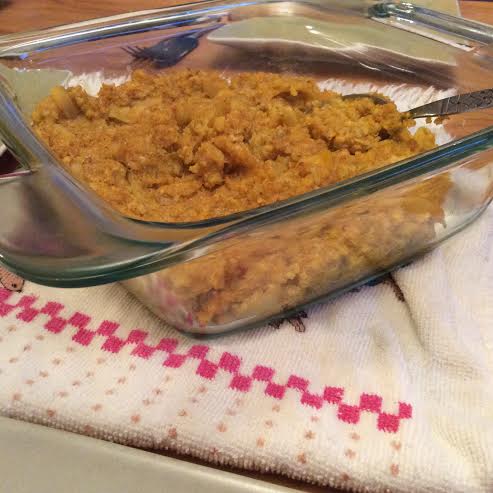Untraditional Indian Dinner (grain free)
It’s spring and I’m loving up my liver with a break from grains, dairy and coffee. Trouble is amongst the fresh nettles, dandelion greens and burdock in the fridge was a tempting bag of spinach that always begs me to make palak paneer (paneer is cheese and the recipe uses milk).
I knew that I could skip the cheese and substitute the milk with coconut milk, but wondered what in the world could substitute chapatis and rice?!
So I searched the net for amaranth chapatis and I found the way (inspired by a religious holiday with fasting where grains are not allowed).
On the fly I created a seed grain pilaf that satisfied me just perfectly to my suprise. I don’t really like any of the seed grains cooked by themselves as a side dish, but put them altogether and wow, it worked!
So if you are grain free, gluten free and dairy free and thought eating Indian would be way off the map, you are in for a real treat!
Enjoy : )
p.s. I didn’t post a picture of the palak as I was experimenting with my new clay oven crock pot which suggests to add more liquid (which I didn’t need to do and it came out soupy, no point in sharing a photo of what it is not going to look like)!
Amaranth Chapatis
 What you will need:
What you will need:
1 cup amaranth
water to a consistency that you can roll the dough without it sticking to the rolling pin
How to do it:
1) Mix the water and amaranth by feel (add more flour if you end up accidentally adding too much water)
2) Knead
3) Divide it into 8 peices (to be rolled out)
4) Put a frying pan on the stove at medium high heat (you will have to turn it down if it starts to burn, once you are on a roll I find that somewhere between med and med-high is just right). No need to add any oil.
5) Roll one of your 8 pieces into a ball and roll out as thin as you can without making it too weak (you might want to have flour on your cutting surface, as well as rub it on your rolling pin to prevent sticking)
6) Cook on both sides (they will puff up somewhat just like wheat chapatis, but not quite as much). While the second side is cooking add a few drops of ghee or butter and then turn over and put a bit of ghee on the other side too (I actually skipped this step and it turned out fine).
7) Repeat until they are all cooked and serve with your favourite Indian recipe (ours is Palak Paneer, see variation below).
8) Spread butter or ghee on before serving for more deliciousness!
Here is where I learned how to do it from this lovely granny on youtube in her video demo. This was my first try, hers are much more beautiful!
Seed Grain Pilaf
What you will need:
 1/4 cup each of amaranth, buckwheat, quinoa and millet (soak for a few hours or overnight and drain)
1/4 cup each of amaranth, buckwheat, quinoa and millet (soak for a few hours or overnight and drain)
2 cups water or broth preferrably
1 yellow onion (sliced in rounds or half rounds)
3 cloves of garlic pressed
2 tsp cumin
2 tsp coriander
1 tsp mustard seeds
pinch of hing
1/4 tsp of tumeric
2 Tbsp unrefined palm oil
1/2 tsp unrefined salt
How to do it:
1) Saute spices in the palm oil until fragrant.
2) Add onions and garlic and saute until translucent.
3) Add rinsed seed grains and unrefined salt and then bring to a boil.
4) Simmer until cooked.
Enjoy on the side of dahl, stews etc.
Crockpot Spinach Palak
What you will need:
1 large bag of fresh spinach
1 large yellow chopped roughly
2 med. fresh tomatoes, quartered
2″ piece of fresh ginger root grated
6 cloves of garlic, peeled
2 Tbs. ground cumin seed
1.5 tsp. red chile powder
1 tsp ground turmeric
2 tsp garam masala (optional)
1 tsp unrefined salt
1 Tbs butter or ghee
1/2 cup coconut milk
How to do it:
1) Layer in a crock pot
2) Cook and stir half way through desired cooking time (depending on your crock pot and whether you are cooking on high or low)
3) Once it is done, puree in a blender
* Palak recipe based on this one.

